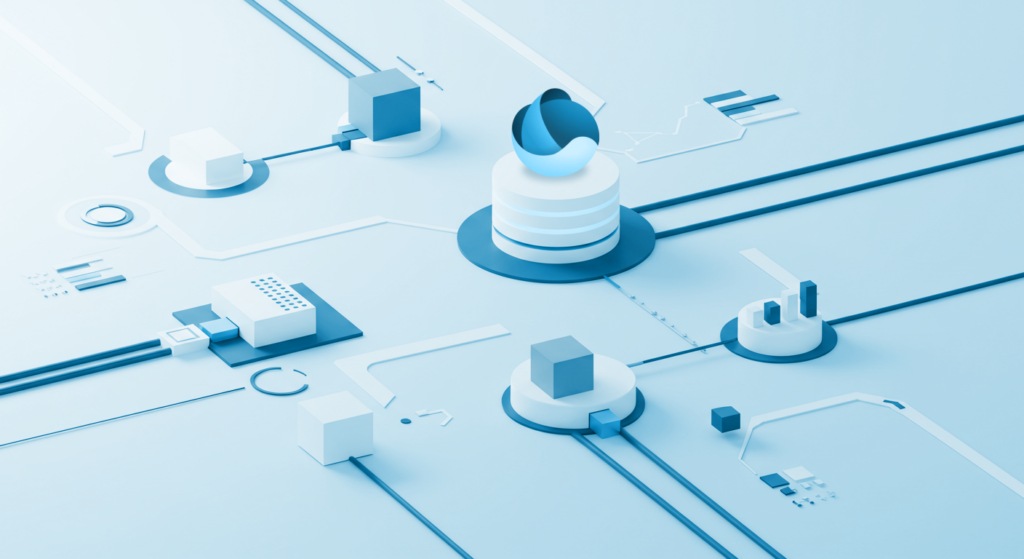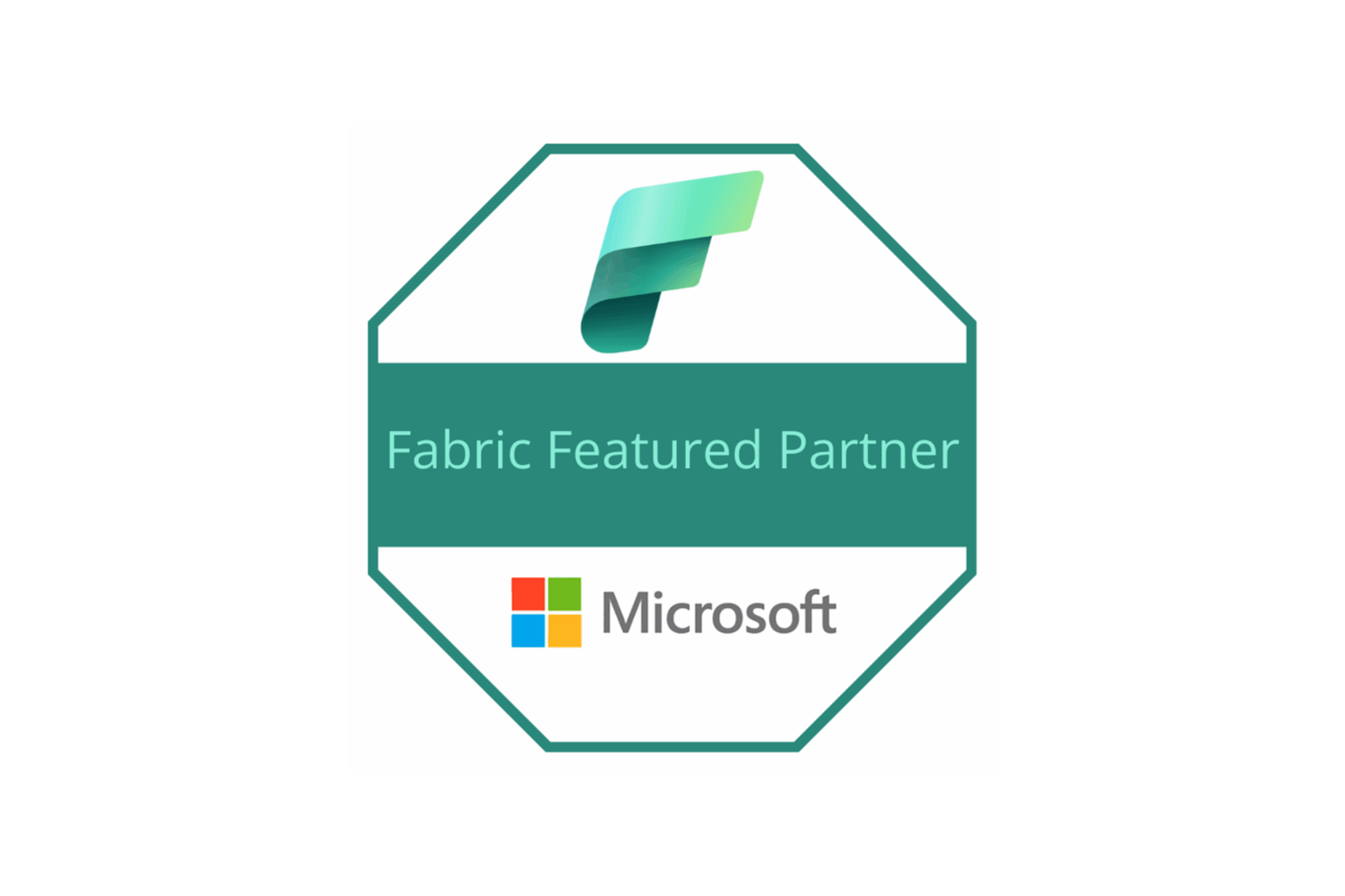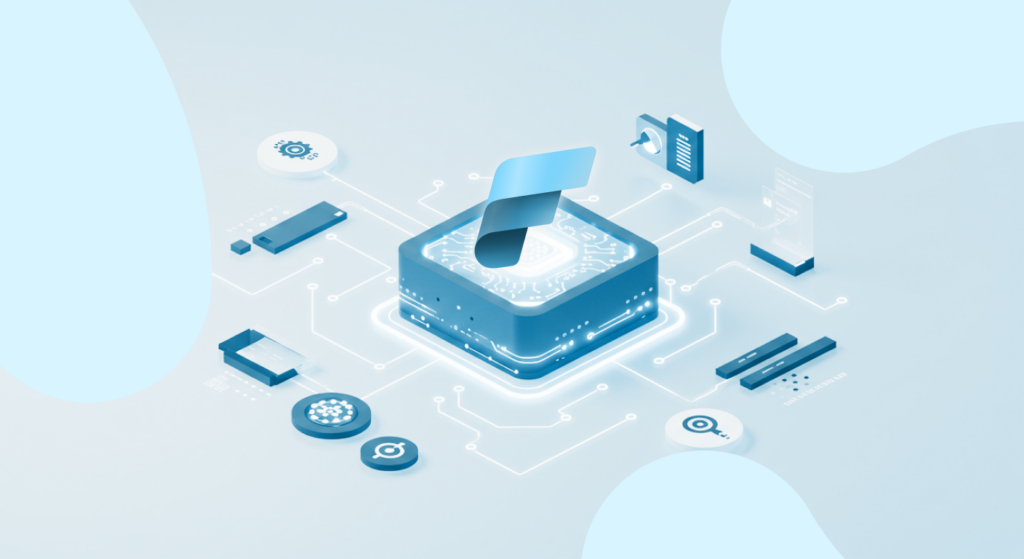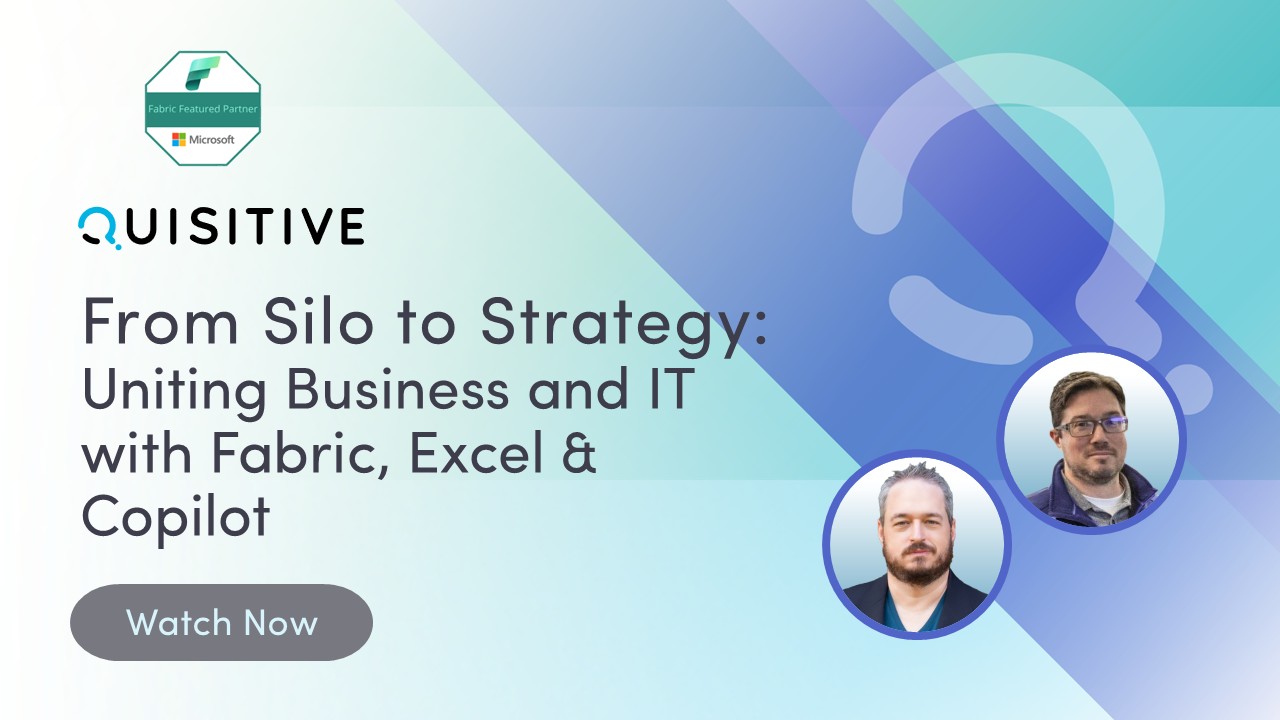There’s something strange about how we work with data.
We invest in tools. Often expensive tools. Dashboards for business users. Pipelines for engineers. Lakes for architects. Then, we spend just as much time wiring them together, moving the same data from one place to another, patching up things that should never have been separate.
This is the problem Microsoft Fabric wants to solve. Not just by building another tool but by removing the idea of separate tools entirely.
Microsoft Fabric is a single platform. It merges Power BI, Synapse, Azure Data Factory, and more into one SaaS product. It gives every team—from analysts to data scientists to app developers—a shared place to work with data. Same platform. Same storage. Same rules.
And it’s built right into the Microsoft ecosystem. It sits natively alongside SharePoint and Microsoft 365. It speaks the same language as your compliance policies. It works the way your organization already works.
This is why Microsoft Fabric matters. If you’re asking what is Microsoft Fabric and whether it solves real business problems, this guide will walk you through the answers.
What is Microsoft Fabric?
Microsoft Fabric is an all-in-one analytics platform that unifies Microsoft’s core data tools under one roof. But simple isn’t really the point.
What makes Fabric different is how it rethinks the entire structure of a data stack. Instead of isolated services, each with their own storage, permissions, and quirks, Fabric offers one unified experience. One place to ingest, clean, analyze, and share data.
At the core is OneLake, Microsoft’s new built-in data lake. It’s like OneDrive, but for analytics, everyone works from the same source. That means no more duplicating datasets between departments or managing separate storage accounts for different workloads. The data lives in one place. Everything else, Power BI, Synapse, notebooks, pipelines connects to it natively.
Next is Copilot, Fabric’s built-in AI. It’s more than just autocomplete. It lets users ask questions in plain language—“How did Q1 revenue compare to last year?”—and it gives them answers pulled straight from their data. No SQL. No DAX. No waiting for someone from the data team to help.
And behind it all is the glue: identity, governance, and access control handled consistently across every part of the platform. Permissions don’t get lost between tools. Compliance doesn’t have to be retrofitted. Everything is managed in one place.
Fabric supports both code-first and low-code approaches. Engineers can use notebooks and Spark. Business users can use drag-and-drop dataflows and Power BI. It’s built for collaboration across roles, not just technical efficiency.
The goal is to simplify the stack without losing power. And that’s where Fabric makes its strongest case. It doesn’t just streamline tools, it builds AI into the way people explore, analyze, and act on data. It doesn’t just promise an easier experience, it delivers one.
Key Components of Microsoft Fabric
Microsoft Fabric isn’t one thing. It’s a set of tightly integrated services that handle every part of the data process. What makes it different is not that these tools are new, but that they finally work together in a way that feels deliberate. Less bolt-on, more built-in.
Here’s a breakdown of the core components.
How AI Shapes Microsoft Fabric
AI in Microsoft Fabric is not an extra feature, it is part of the foundation. Copilot, Microsoft’s AI assistant, is built into every layer of the platform. It helps users query data in plain language, generate reports on demand, and act on insights without writing code or waiting on analysts.
This changes the way organizations use data. Instead of relying on a few technical experts to interpret dashboards or run complex queries, Fabric lets anyone with a question get an answer quickly, securely, and in context. AI speeds up decision-making, reduces hand-offs, and opens analytics up to the people closest to the problem.
It is also part of a wider shift across Microsoft. Copilot is being embedded into Microsoft 365, Teams, SharePoint, and Power Platform. Fabric fits right into that road map, giving teams a consistent, AI-first experience across the tools they already use every day.
OneLake: The Foundation
Every Microsoft Fabric tenant comes with OneLake, a shared data lake for the whole organization. It is the default storage layer for all workloads in Fabric. Instead of teams setting up their own storage silos, everyone works from one place.
OneLake supports open data formats like Delta Parquet. That means it plays well with other tools, even if they are not part of the Microsoft ecosystem. It also supports shortcuts, which let you reference data stored elsewhere without physically copying it. This keeps your storage lean and your governance consistent.

Power BI: Visualization and Reporting
Power BI has been Microsoft’s flagship BI tool for years. In Fabric, it is even more tightly integrated. It connects directly to OneLake, so there is no need to move data to another environment before you can build dashboards.
This removes a common bottleneck. Analysts can connect to live data, create reports, and share them across the organization with minimal friction. And because it is all built into Fabric, the same security and access policies apply by default.
Data Factory: Pipelines Without the Pain
Data Factory is the ETL and data integration layer in Fabric. It supports over 200 native connectors, making it easy to pull data in from third-party systems. You can build pipelines using a visual editor or write your own code if you need more control.
For teams used to juggling integration tools, this is a simpler way to manage data movement. It is less about building pipelines from scratch, more about stitching together sources in a way that just works.
Synapse Data Warehouse and Real-Time Analytics
Fabric includes both a traditional data warehouse and a real-time analytics engine.
The warehouse is SQL-first and uses the Delta Lake open format. It is built for structured, relational data at scale. Think finance, operations, customer records.
Real-time analytics, on the other hand, is built for high-volume, streaming data. Think operational dashboards that monitor manufacturing lines, fraud detection systems, or live customer behavior tracking. You can set up dashboards that update live, run custom logic on streaming events, and feed alerts or insights into apps or workflows in near real time.
Data Science and Engineering Workloads
Fabric includes support for Spark, notebooks, and other tools used by data scientists and engineers. You can write code in Python, R, or Scala, use open-source packages, and collaborate with other teams through shared workspaces and Git integration.
For teams building machine learning models or doing complex data transformations, this means less context-switching. You can stay inside Fabric and still use the tools you know.
Copilot: Natural Language Meets Analytics
We already touched on this, but it’s worth repeating. Copilot is Fabric’s built-in AI assistant. It lets you ask questions using normal language and get back charts, summaries, and insights. No special syntax, no long wait times. This shifts how people work with data. It opens access to team members who don’t write SQL or build models. And it speeds up decision-making for people who just want a quick answer.

What Problems Does It Solve?
The promise of a modern data stack was always clear. Choose best-in-class tools for each job, wire them together, and you get a system that works the way you want. But in practice, most teams end up spending more time managing the stack than using it.
If you’re still wondering what Microsoft Fabric solves that older tools don’t, it comes down to structure. It fixes the fragmentation and friction that slow teams down. It is not just about better features, it is about reducing friction that slows teams down.
Here are the key problems it addresses.
1. Fragmented tooling
In most companies, the analytics environment is a mix of old and new: Power BI for reports, Synapse for queries, Data Factory for pipelines, and Azure Data Lake for storage. Each tool might be good at what it does, but they were not designed to work together from the start.
Fabric brings these tools under one umbrella. There is a shared interface, a shared security model, and shared storage. That means less time spent setting up integrations and more time working with data.
2. Duplicate data, inconsistent results
Different teams often keep their own copies of the same datasets. One in Excel, one in a BI tool, another in a warehouse. It is no surprise they get different answers from the same question.
With OneLake as the single source of truth, teams work from the same data. That makes it easier to spot issues, enforce data quality, and align teams around shared metrics.
3. Governance gaps
Governance is usually the last step, not the first. You build dashboards, then add permissions. You move data to new storage, then remember to lock it down.
In Fabric, governance is built in. Security and access controls are managed centrally. Sensitivity labels and policies apply across all workloads. That means compliance is no longer a bolt-on. It is part of the system.
4. Complexity at scale
As teams grow, the overhead grows with them. More tools, more users, more copies of data. The result is a fragile system that is hard to manage and expensive to scale.
Fabric simplifies this by consolidating tools and standardizing infrastructure. You do not need five different services to support five roles. Everything runs on the same platform, using the same capacity model.
5. Bottlenecks in access and insight
Most organizations still rely on a small number of experts to answer data questions. If you do not know SQL or DAX, you have to wait for someone who does. That slows decisions and overloads the analytics team.
Fabric opens up access to data across the business, so people can get the answers they need without overloading technical teams.
How Microsoft Fabric Fits into the Microsoft Ecosystem
If you already use Microsoft tools, Fabric is not a bolt-on; it is a natural extension. It connects directly with the services many organizations rely on every day, and that makes adoption easier and more effective.
Power BI Becomes More Powerful
Power BI is already the go-to reporting tool in many companies. With Fabric, it gets a serious upgrade. Reports connect directly to data in OneLake, so there is no need to export, duplicate, or move data around. Everything stays in one place.
This means faster dashboards, better governance, and fewer chances for errors. Power BI also gains access to Copilot, so users can create visuals and summaries with just a question.
Azure Synapse and Data Factory Under One Roof
Before Fabric, Synapse, and Data Factory existed as separate services. Now they are just part of the same experience. The workflows are unified, the UI is consistent, and the underlying infrastructure is shared.
This matters for teams that used to spend time jumping between interfaces and re-learning tool-specific quirks. Fabric flattens that learning curve.
Deeper Integration with Microsoft 365 and SharePoint
Fabric is part of the Microsoft 365 family, so it benefits from native integration with tools like SharePoint, Teams, and OneDrive. If your organization is already structured around these tools, Fabric fits right in.
For finance and compliance teams, SharePoint-native data management is a big deal. You can build solutions that meet regulatory requirements without needing custom development or third-party governance tools. That means your data classification, compliance labels, and audit logs stay consistent across Microsoft 365 and Fabric with no extra configuration needed.
Works with the Power Platform
Fabric connects with Power Apps and Power Automate, which means you can turn insights into action without writing custom code. For example, when a data threshold is crossed, you can automatically trigger a workflow, send a notification, or update a record.
This is how Fabric moves beyond just analytics. It becomes part of your operational toolkit.
Backed by Microsoft’s Roadmap
Microsoft is investing heavily in Fabric, and that shows in the pace of updates. This is not a side experiment. It’s the future of Microsoft’s data platform. If your business is already built on Microsoft 365, Azure, or Power BI, Fabric isn’t optional, it’s where the whole ecosystem is heading.
If your organization is already aligned with Microsoft’s cloud strategy, Fabric is not just a safe bet, it is the direction things are going.
Getting Started with Microsoft Fabric
If your organization is using Power BI, Synapse, or Azure Data Factory, you’ve probably asked, what is Microsoft Fabric, and how does it fit into the stack you already have? In short, it’s the logical next step. It simplifies your stack, cuts down on duplicated work, and gives every team access to shared, governed data.
There are two ways to get started. You can explore the free trial, which includes temporary capacity and OneLake storage. This is a good way to familiarize yourself with the interface and test how it fits into your existing environment. Or you can enable Fabric on your existing Power BI Premium capacity and start using it in production right away.
Either way, it helps to start with a plan. What roles will use Fabric? What data sources will move first? What workloads make sense to consolidate?
That is where Quisitive comes in. As a long-time Microsoft partner, we help organizations map out their Fabric strategy—from pilot to production. Whether you are migrating a legacy system, modernizing your reporting, or tightening governance, we work with your team to make the rollout smooth and practical.
Why Work with Quisitive on Microsoft Fabric?
As Microsoft’s 2024 Worldwide Partner of the Year for Analytics, Quisitive brings deep expertise in deploying Microsoft Fabric across industries like healthcare, finance, and manufacturing. Whether you’re exploring Fabric for the first time or ready to scale, our team can guide you through strategy, implementation, and use case development. Let’s unlock the full potential of your data together.

This major achievement underscores our deep expertise in, and successful implementations of, Microsoft Fabric.
Take the first steps towards modern data utilization.
Quisitive’s Microsoft Fabric Design Lab combines education, use case development, and strategic planning to show how Fabric can harness your data to provide actionable insights for your organization.

;)



